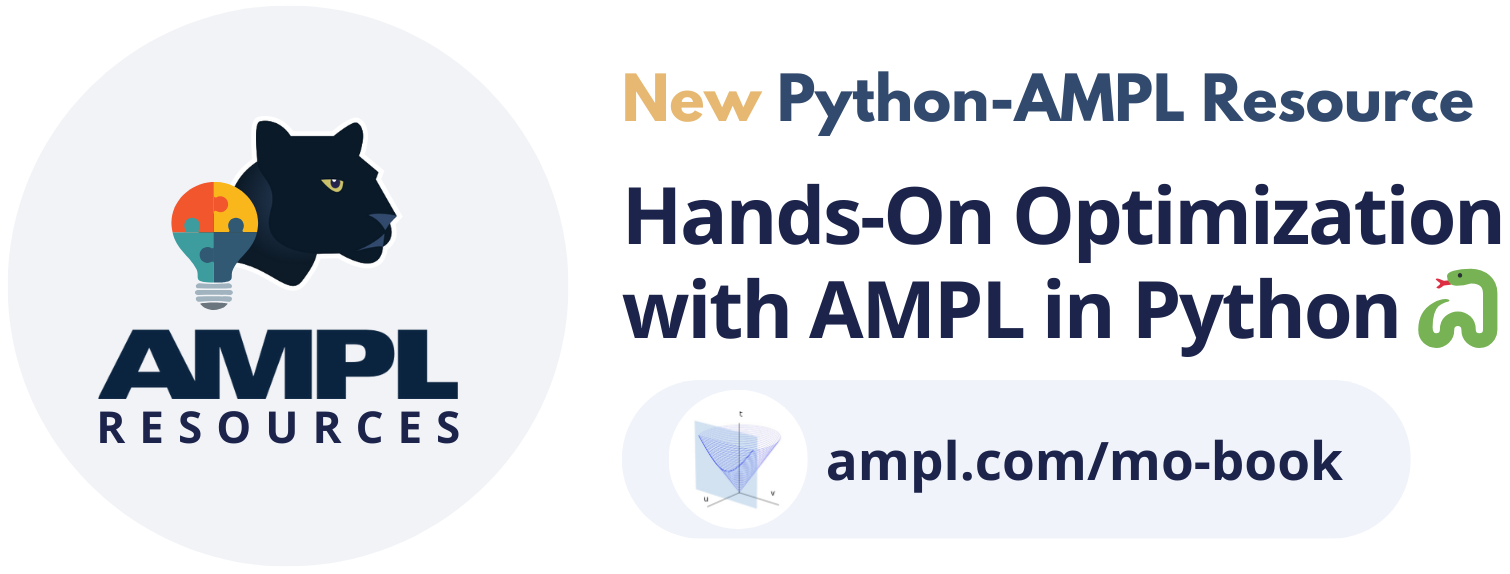AMPL Python API
amplpy is an interface that allows developers to access the features of AMPL from within Python.
For a quick introduction to AMPL see Quick Introduction to AMPL.
In the same way that AMPL’s syntax matches naturally the mathematical description of the model,
the input and output data matches naturally Python lists, sets, dictionaries, pandas and numpy objects.
All model generation and solver interaction is handled directly by AMPL, which leads to
great stability and speed; the library just acts as an intermediary, and the added overhead (in terms of memory and
CPU usage) depends mostly on how much data is sent and read back from AMPL, the size of the expanded model as such is irrelevant.
With amplpy you can model and solve large scale optimization problems in Python with the performance of heavily optimized C code
without losing model readability. The same model can be deployed on applications
built on different languages by just switching the API used.

Installation & minimal example
# Install Python API for AMPL
$ python -m pip install amplpy --upgrade
# Install solver modules (e.g., HiGHS, CBC, Gurobi)
$ python -m amplpy.modules install highs cbc gurobi
# Activate your license (e.g., free https://ampl.com/ce license)
$ python -m amplpy.modules activate <license-uuid>
# Import in Python
$ python
>>> from amplpy import AMPL
>>> ampl = AMPL() # instantiate AMPL object
Note
You can use a free Community Edition license, which allows free
and perpetual use of AMPL with Open-Source solvers. There are also free AMPL for Courses licenses that give unlimited
access to all commercial solvers for teaching.
# Minimal example:
from amplpy import AMPL
import pandas as pd
ampl = AMPL()
ampl.eval(r"""
set A ordered;
param S{A, A};
param lb default 0;
param ub default 1;
var w{A} >= lb <= ub;
minimize portfolio_variance:
sum {i in A, j in A} w[i] * S[i, j] * w[j];
s.t. portfolio_weights:
sum {i in A} w[i] = 1;
""")
tickers, cov_matrix = # ... pre-process data in Python
ampl.set["A"] = tickers
ampl.param["S"] = pd.DataFrame(cov_matrix, index=tickers, columns=tickers)
ampl.solve(solver="gurobi", gurobi_options="outlev=1")
assert ampl.solve_result == "solved"
sigma = ampl.get_value("sqrt(sum {i in A, j in A} w[i] * S[i, j] * w[j])")
print(f"Volatility: {sigma*100:.1f}%")
# ... post-process solution in Python